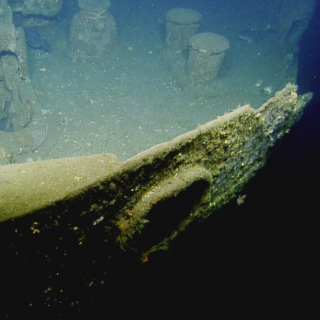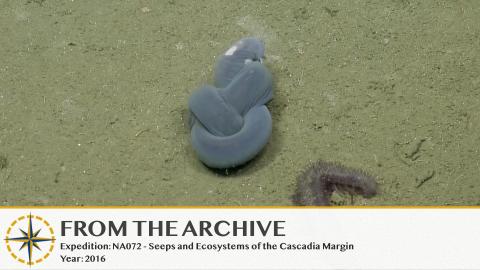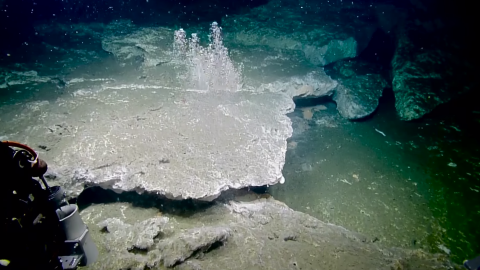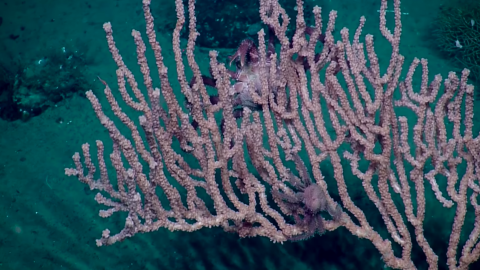Astoria Canyon: Bubbles and Fauna
Launching ROVs to explore Astoria Canyon provided scientists including oceanographers and geochemists a wealth of knowledge about methane seeps that were mapped by E/V Nautilus. The dive also demonstrated an abundance of biodiversity. Around 850 meters deep on the canyon floor, researchers and viewers around the world observed a number of benthic invertabrates including seastars, anemones, and sea cucumbers. As the ROVs ascended the canyon wall a plethora of octupuses were observed, as well as crinoids, urchins, anemones and deep sea corals. The area appeared to be supercharged with methane. The seep sites were actively releasing the gas in bubbles and were surrounded by chemosynthetic bacterial mats.
ROV Hercules was able to successfully sample sediment cores, slurps, methane gas, carbonate substrate, and a few carefully selected biological samples. In some images you can see the beauty of the seafloor through ROV Argus's eyes. In others you can see ROV Hercules collect these valuable biological and geological samples. The beauty of the deep sea speaks for itself in these stunning images of marine life.

Seeps and Ecosystems of the Cascadia Margin
Methane is a powerful greenhouse gas and an important commercial resource that fuels many elements of our lives on land. Scientists are beginning to understand the complex and varied ways methane fuels life beneath the sea as well. Nautilus will study methane seep habitats along the length of the Cascadia Subduction Zone, from southern British Columbia to northern California.



























